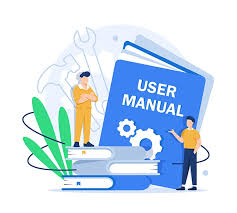The video game translation has grown rapidly in recent years. That’s why video game translation is now essential to reach global audiences. It’s not enough to translate words. Emotions, cultural references, and unique styles must also be preserved.

What is video game translation?
Video game translation involves more than changing the text’s language. Menus, subtitles, voiceovers, scripts, and visuals must also be adapted. Everything needs to match the expectations of a new audience. This process is called localization.
Why is localization so important?
Gamers want to feel part of the game’s world. To achieve that, they need to understand not just what happens, but why. If a joke or cultural reference isn’t adapted, it loses meaning. Localization ensures that the content feels natural.
Context matters
Translating without context is a common mistake. A translator may misinterpret a word if they don’t know who says it or when. For instance, the word “run” can mean many things: run away, manage, or even operate.
That’s why studios should provide guides, glossaries, and references. This helps the translator keep consistency and the right tone. With preparation, errors can be avoided, and the player’s experience improves.
Adapting humor and cultural references
One of the hardest parts of video game translation is adapting humor. Jokes often rely on wordplay or cultural meaning. If you translate literally, the impact disappears.
So, some lines must be rewritten. The goal is to trigger the same emotion, not mirror the original structure. This takes creativity, but more importantly, it demands respect for the source.
Preserving style and character voice
Each character has a specific way of speaking. Some are formal, others are rude or funny. These details define who they are. So, it’s essential to preserve these voices in every language.
The translator must catch these nuances and reproduce them. If all characters sound the same, the game loses depth. With good localization, each voice keeps its identity.
Voiceover: a deeper level of localization
In many cases, video game translation includes voiceover. This involves voice actors, but the process starts earlier. First, the script is adapted to match timing and lip movements. Then, it’s recorded with direction that preserves the tone.
Good voiceover enhances immersion. It makes the player feel inside the story. That’s why professional teams are necessary every step of the way.
UI and menu localization
Dialogue matters, but menus also play a role. If players can’t navigate easily, they get frustrated. Every visual element needs to be adapted clearly and accurately.
You must also consider technical limits. Some consoles have limited space for text. This requires concise wording that still keeps the meaning.
Avoiding common mistakes
A bad translation can ruin gameplay. Some mistakes seem minor, but affect the player. For example, mislabeling a button or translating literally with no sense. Unedited text or inconsistent phrases are also common.
To prevent this, testing is vital. Linguistic testers play the game in real time. They detect issues and fix them before launch.
Connecting with the player
In the end, video game translation has one goal: connection. It’s not just about changing the language. It’s about building a full experience. The player should feel like the game was made for them, no matter the original language.
When done right, players dive into the game world. They laugh at jokes, feel the story, and understand every reference. That only happens with careful, thoughtful work.
Conclusion
Video game translation is complex. It takes more than knowing two languages. It demands cultural sensitivity, creativity, and love for games. A good localization can mean the difference between success and failure. So, if you want your game to go far, invest in professional translation that keeps your story alive.



